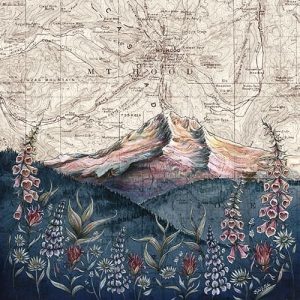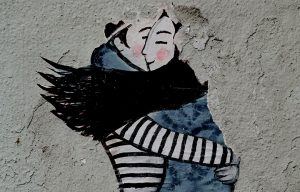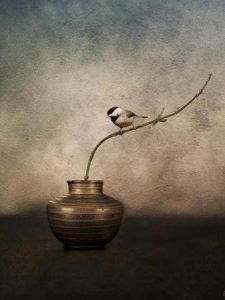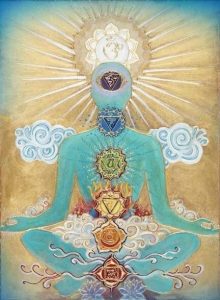 The Yogabliss, Your Heart Life on-line Moving into Meditation classes met this morning. We explored the different states of being that arise in mindfulness practice. Navigating with intention, enlivened by attention helps to create the condition in which ease, joy and curiosity arise.
The Yogabliss, Your Heart Life on-line Moving into Meditation classes met this morning. We explored the different states of being that arise in mindfulness practice. Navigating with intention, enlivened by attention helps to create the condition in which ease, joy and curiosity arise.
Sharing the journey has kept my heart open along the way.
We heard from Brother David Steindl-Rast’s essay, On Gratefulness and the Body from “Encounter with God through the Senses.” In this essay Brother David writes about the body’s language of the senses. He has adopted gratefulness as a method for cultivating mindfulness.
We heard Susan Aposhyan’s views on meditation. They are outlined in her Kosmos Journal essay, Our Animal Bodies and the Unitive State:
Open Heart/Body Awake. Susan urges us to to practice mindfulness of the body to open our hearts and love!
We heard Mary Oliver’s short poem about joy and grief. She simply affirms how we hold them both.
 We drew from the fifth chapter of Kathleen Dowling Singh’s book, The Grace in Aging: Awaken As You Grow Older. In this section, Opening the Precious Package, Kathleen reminds us that we all have awareness and the potential for awakening. She teaches that devoted practice supported by intention, sustained by attention create the conditions for the experiences of contented ease, joy and curiosity.
We drew from the fifth chapter of Kathleen Dowling Singh’s book, The Grace in Aging: Awaken As You Grow Older. In this section, Opening the Precious Package, Kathleen reminds us that we all have awareness and the potential for awakening. She teaches that devoted practice supported by intention, sustained by attention create the conditions for the experiences of contented ease, joy and curiosity.
We heard Jane Hirshfield’s poem Standing Deer. This poem speaks to the ebb and flow of life. How we are filled and emptied with experience and the passing of time. What we have left – if we are lucky – is our tender presence.
Thank you for being here. Being here is an affirmation and a humble gratitude. We are here to experience the wonder of being and breathing. Sometimes we go about our days not remembering the hands that enabled us to be here. We go about our days not remembering our own hands. I invite you sense your hands. Are they quiet or still? Cold or warm? Do they rest comfortably? Do they ache or contract? As you continue to bring awareness to your hands, you might notice other sensory experiences. You might experience memories, thoughts or emotions. Can you expand awareness to to be present with these experiences?
You might consider how your body is a miracle. You are more than any part. You are even more than the sum of all your parts. I invite you to explore a sense of wholeness now. Can you feel breathing without controlling the breath in any way? You might notice the transitions between breaths: each breath smoothly and effortlessly becoming the next. Can you tune into the experience of ease?
 As you move more fully into feeling your body, you may begin to trust your body’s many expressions. Notice this experience of allowing and where it might lead. What is like to let go of trying and welcome the ever changing experiences of being? Can you be curious about the nature of being?
As you move more fully into feeling your body, you may begin to trust your body’s many expressions. Notice this experience of allowing and where it might lead. What is like to let go of trying and welcome the ever changing experiences of being? Can you be curious about the nature of being?
Can you venture further into this opening awareness? Can you accept the breath just as it is? In nonjudgmental openness breath can be an instrument of understanding. Oh to open to all this: to the known and unknown. Do you sense the voice that arises, speaking in a language of sensation? Let it be known as Body breathes. Brother David Steindl-Rast shares this experience:
God’s inexhaustible poetry comes to me in five languages: seeing, hearing, smelling, touching and tasting. . . . To have a place of solitude like this is an inestimable gift. It makes it easy to let the heart expand, to let the senses wake up, one by one . . . What comes alive in those moments is more than eyes or ears; our heart listens and rises to respond. . . . Outside and inside are of one piece. As we learn to really look with our eyes, we begin to look with our heart also. . . . To be in touch with one’s body is to be in touch with the world.
This is our practice. We take the utmost care and kindness with all things: body, breath, sensation, emotion, thought. We take the utmost care and kindness with all beings.
Somatic therapist and writer Susan Aposhyan views meditation as a “unitive sate” we can cultivate by practicing mindfully feeling our bodies. With practice:
 . . . our connections with ourselves and the rest of the world deepen and blossom.. . . [We] can . . . love more, more bravely, more generously, more widely, more intentionally, more wholeheartedly, in our own unique ways and our own unique places. . . . Love more. In wider and wider circles. Love other humans more. Love the more-than-human world more. Love yourself, your quirks, your suffering, your unique genius, your irreplaceable life – more. We can love more through how we move our bodies with more presence and less aggression. . . . We can love the sun, the leaves, the life-giving waters, the miraculous birds not yet extinct even more. LOVE, my friends. . . . And it might even be, along with being bittersweet and griefy (because all love is that), wonder-full.
. . . our connections with ourselves and the rest of the world deepen and blossom.. . . [We] can . . . love more, more bravely, more generously, more widely, more intentionally, more wholeheartedly, in our own unique ways and our own unique places. . . . Love more. In wider and wider circles. Love other humans more. Love the more-than-human world more. Love yourself, your quirks, your suffering, your unique genius, your irreplaceable life – more. We can love more through how we move our bodies with more presence and less aggression. . . . We can love the sun, the leaves, the life-giving waters, the miraculous birds not yet extinct even more. LOVE, my friends. . . . And it might even be, along with being bittersweet and griefy (because all love is that), wonder-full.
We can love the sun, the life giving waters . . . LOVE my friends might even be – along with the bittersweet . . . along with the grief . . . might even be wonderful. Full of wonder. As Mary Oliver observes:
 We shake with joy, we shake with grief.
We shake with joy, we shake with grief.
What a time they have, these two
housed as they are in the same body.
I invite you to sense your body resting on Earth’s body. Notice what surfaces in the field of awareness. Sensation . . . emotion . . . thought . . . presence. Notice the nature of presence . . . available . . . open . . . quiet . . . Is there an absence of wanting? The fullness of what you are witnessing?
C an your intention to be present be a simple willingness to orient toward being aware? No need to grasp or struggle. Can you set your sails and be carried? As you become aware of drifting notice the energy of attention reorienting to awareness. Perhaps just a slight adjustment – a whisper brings you back. In time you might notice a sense of ease arising. A sense of contentment. How is it to abide with ease?
an your intention to be present be a simple willingness to orient toward being aware? No need to grasp or struggle. Can you set your sails and be carried? As you become aware of drifting notice the energy of attention reorienting to awareness. Perhaps just a slight adjustment – a whisper brings you back. In time you might notice a sense of ease arising. A sense of contentment. How is it to abide with ease?
Kathleen Dowling Singh writes:
Joy arises out of such deep ease. Joy arises with surrender, with the sane and natural trust that engendered surrender.. . . It is the taste of increasingly bare, increasingly subtle awareness. . . . There is no need to grasp at joy. It is always present, always within the airy easy spaciousness of now. It is not possible to own it.
I invite you to rest. I invite you to be present as effortlessly as possible. Open and curious. Kathleen describes:
Curiosity is a mind controlling nothing. . . . without prejudice or expectation, undefended . . . It becomes absorbed in the ever novel and endless display of the ground of being.
 We can reflect on these qualities of being alive: Intention. Attention. Ease. Joy. Curiosity. How do they surface in our lives? As inner resources we awaken? As gifts we choose to open? Can you recall a time you navigated by intention? Remained present with attention? Experienced a sense of ease naturally arising? A joy awakening with curiosity and wonder?
We can reflect on these qualities of being alive: Intention. Attention. Ease. Joy. Curiosity. How do they surface in our lives? As inner resources we awaken? As gifts we choose to open? Can you recall a time you navigated by intention? Remained present with attention? Experienced a sense of ease naturally arising? A joy awakening with curiosity and wonder?
In her poem, Standing Deer, Jane Hirshfield points to an experience of being filled and emptied, again and again over the course of our lives.
As the house of a person
in age sometimes grows cluttered
with what is
too loved or too heavy to part with,
the heart may grow cluttered.
And still the house will be emptied,
and still the heart.
As the thoughts of a person
in age sometimes grow sparer,
like the great cleanness come into a room,
the soul may grow sparer;
one sparrow song carves it completely.
And still the room is full,
and still the heart.
 Empty and filled,
Empty and filled,
like the curling half-light of morning,
in which everything is still possible and so why not.
Filled and empty,
like the curling half-light of evening,
in which everything now is finished and so why not.
Beloved, what can be, what was,
will be taken from us.
I have disappointed.
I am sorry. I knew no better.
A root seeks water.
Tenderness only breaks open the earth.
This morning, out the window,
the deer stood like a blessing, then vanished.
Let us be empty and filled. For possibility. Filled and empty. For what is finished. Let us be present at the window. Let us witness the deer and receive its blessing.

